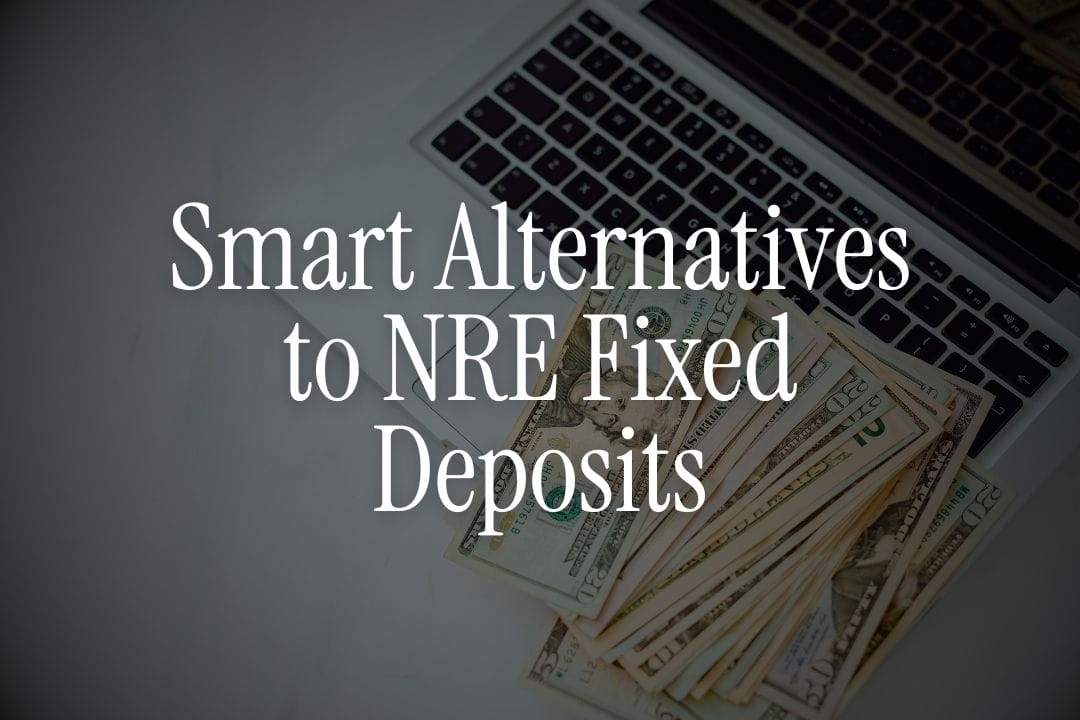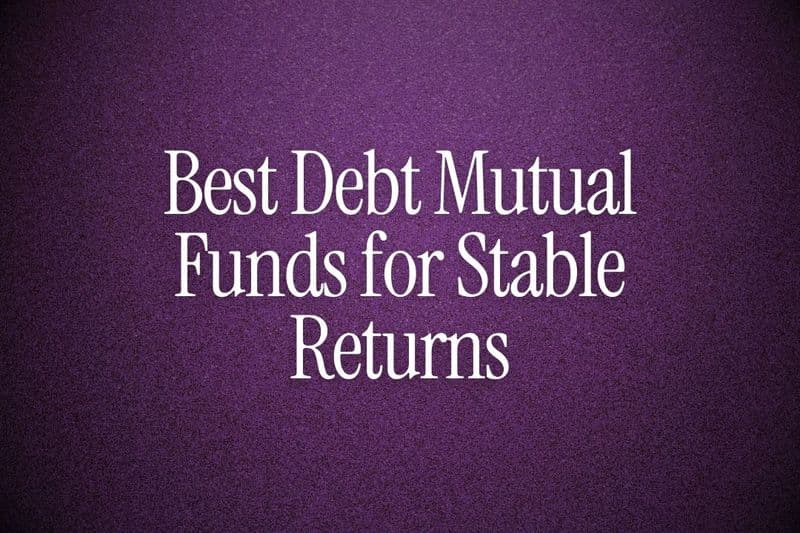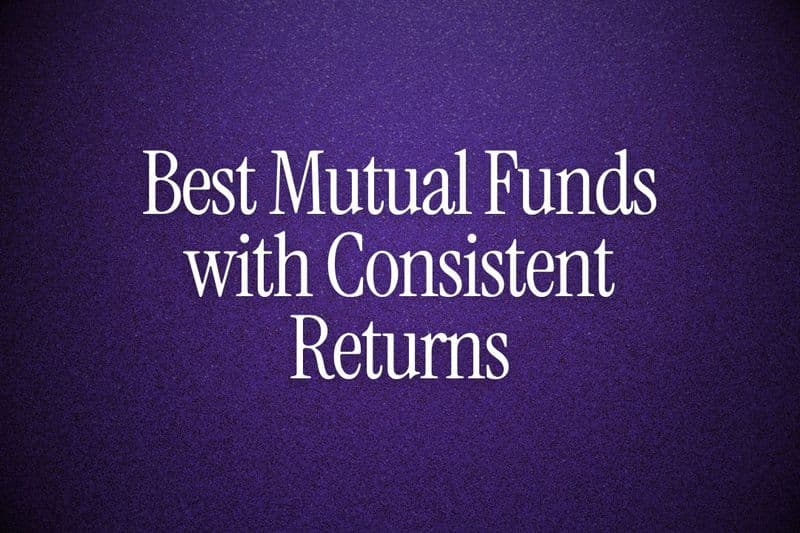
You've parked money in NRE FDs for years. Tax-free, safe, guaranteed returns. But here's what most articles won't tell you: NRE fixed deposits at 3-4% might be leaving real money on the table, especially with rupee depreciation eating into your gains.
At Belong, we work with hundreds of NRIs across the UAE, UK, and US who feel stuck.
They ask us: Is there something better? Something that beats inflation? Something that doesn't force me to watch my purchasing power shrink?
This article answers exactly that. We've compared five proven alternatives to NRE FDs - looking at returns, tax implications, repatriation rules, and real-world risks. You'll know which one fits your situation by the end.
Join our WhatsApp community of NRIs already having these conversations. You can ask questions, share strategies, and get personalized guidance.
The Real Problem with Sticking Only to NRE FDs
Let's be honest: NRE fixed deposits solved a problem in 2015. Foreign earnings, tax-free interest, full repatriation. Clean.
But today, they're not solving the biggest problem NRIs face: rupee depreciation.
Between 2018 and 2024, the Indian rupee lost roughly 22% against the US dollar. If you earned 6% interest on an NRE FD but your rupees became worth 30% less, you didn't win - you lost 25% in real terms.
This is why we built the Belong FD Comparison Tool and the Rupee vs Dollar Tracker. NRIs deserve to see this trade-off upfront.
👉 Tip: Before comparing alternatives, check your current FD's real return: Interest Rate - Rupee Depreciation Rate = Actual Gain.
Alternative 1: GIFT City USD Fixed Deposits (The Winner for Most NRIs)
What it is: Fixed deposits in US dollars held directly in GIFT City (India's international financial hub in Gujarat). Not rupee-denominated, not converted - pure USD earning returns in USD.
Key numbers:
- Returns between 4.5-6% annually on USD deposits
- Tenures as short as 3 months (unlike FCNR FDs which require 1-year minimum)
- No TDS (Tax Deduction at Source) on interest earned
- Fully repatriable with no restrictions
Why it beats NRE FDs:
An NRE FD earning 6.5% in rupees loses value when the rupee weakens. A GIFT City USD FD earning 6% stays locked at that 6% because there's no currency conversion gamble. If rupees depreciate by 3%, you've still come out ahead. If they strengthen, you get both the interest and the currency gain.
This is called a natural hedge. Most NRIs overseas don't have it in their portfolio.
Tax treatment: Interest is completely tax-free in India. You pay taxes only in your country of residence. Since UAE has no income tax, most NRIs pay zero tax on these gains.
How to open: No PAN or Aadhaar needed - just a passport, local ID (like Emirates ID), and a utility bill or bank statement showing your address. Verification can be done via video call or through a notary.
Also Read -How to Link Aadhaar and PAN to Your NRI Bank Account
Real concern: Rates are lower than traditional NRE FDs. But that 1-2% gap is worth the currency protection if you're planning to repatriate to the US, UK, or back to a developed country.
👉 Tip: Use the Belong FD Comparison Tool to see live rates across GIFT City banks. ICICI, Yes Bank, and Federal Bank currently offer 4.5-6.5% on USD FDs.
Alternative 2: Debt Mutual Funds (For the Patient Investor)
What it is: Professionally managed funds that invest in government and corporate bonds, offering returns typically higher than FDs over a 3-5 year period.
Returns: Historically 6-8% annually, though these fluctuate with interest rates.
Why NRIs choose this: You're not locked in. Unlike a 5-year FD where your money is stuck, you can withdraw from a debt fund anytime, though you'll face taxation if you exit before 3 years.
Tax advantage: Long-term capital gains (if held over 3 years) are taxed at just 10%, which is better than NRO FDs taxed at 30%. Even NRE FD interest (tax-free in India) gets taxed if you later become a resident of India, but debt fund gains remain 10%.
The catch: Unlike FDs, debt fund returns aren't guaranteed. If interest rates rise, the value of bonds in the fund drops temporarily. It's still low-risk, but it's not guaranteed.
How to invest: Open an NRE account, complete KYC (most fund houses now accept video KYC for NRIs), and invest via SIP (Systematic Investment Plan) or lumpsum. SIPs allow you to invest a fixed amount regularly, which helps average out costs and reduces risk.
Practical example: ₹25 lakh in a debt fund earning 7% over 5 years = ₹35.04 lakh. Tax on long-term gains = 10% of ₹10.04 lakh = ₹1 lakh. Net gain = ₹9.04 lakh. Compare this to an NRE FD earning 6.5% = ₹10.06 lakh (zero tax in India, but becomes taxable if you return). Debt fund wins on after-tax basis for many scenarios.
👉 Tip: Start small. Try ₹50,000 monthly SIPs for 6 months. This removes the pressure of investing a lumpsum and builds confidence.
Alternative 3: Large-Cap Equity Mutual Funds (For Long-Term Wealth)
What it is: Funds that invest in the top 100 companies by market cap (Reliance, TCS, ICICI, HDFC, etc.). Higher risk than debt, but historically beat inflation over 10+ years.
Why NRIs consider it: Because staying in FDs for 20 years almost guarantees you'll lose to inflation. Stock market returns over 20 years have averaged 12-15% annually in India.
Real numbers:
- ₹25 lakh in a large-cap fund growing at 12% annually over 10 years = ₹77.53 lakh
- Same amount in an NRE FD at 6.5% = ₹48.20 lakh
- Difference: Nearly ₹30 lakh extra
Tax treatment: Long-term capital gains (held over 1 year) taxed at just 12.5on gains exceeding ₹1.25 lakh; short-term capital gains taxed at 20%; for NRIs, TDS at 12.5% on LTCG and 20% on STCG
. NRE FD interest becomes taxable if you return to India as a resident.
The reality check: Stock markets fall. Your ₹25 lakh might dip to ₹20 lakh in a market crash. But over 10+ years, crashes are noise. The trend is growth.
Who this suits: NRIs aged 35-50 who won't need the money for 10+ years.
👉 Tip: Start a monthly SIP instead of a lumpsum. ₹10,000/month for 10 years in a large-cap fund beats ₹12 lakh invested today in 90% of cases. It's psychologically easier too - no regret if markets dip the month you invest.
Also Read - Taxation on Mutual Funds
Alternative 4: FCNR Fixed Deposits (Foreign Currency Non-Resident)
What it is: FDs held in foreign currencies (USD, GBP, EUR, AUD, etc.) instead of rupees. The deposit is maintained in the foreign currency itself.
Returns: Typically 4-5% annually, lower than NRE or GIFT City FDs.
Also Read - Which bank is best for fixed deposit in india
Why it exists: For NRIs who don't want any currency conversion. You earn dollars, keep dollars, spend dollars - no rupee risk at all.
Vs. GIFT City FDs: This is the comparison people get confused about.
FCNR: Lower rates (4-5%), longer minimum tenure (1 year minimum), interest penalty if you withdraw early, zero interest if withdrawn before 1 year.
GIFT City USD FD: Higher rates (5-6.5%), shorter tenures (even 3-month options), partial interest on early withdrawal, regulated by IFSCA.
Real talk: GIFT City FDs have replaced FCNR for most new NRI investors. Same currency protection, better rates, more flexibility. Unless you need a 1-year lock-in for discipline, GIFT City wins.
👉 Tip: If safety matters most and you want a guaranteed lock-in (forcing you not to touch the money), FCNR works. But for pure returns and flexibility, GIFT City is the modern choice.
Alternative 5: National Pension System (NPS) – The Overlooked Long-Term Bet
What it is: A voluntary, long-term retirement savings scheme regulated by PFRDA that lets you choose how much equity vs. debt exposure you want.
Why NRIs miss this: Most people think NPS is only for Indians. Not true - NRIs and OCIs can open NPS Tier 1 accounts.
Key features:
- Tier 1 Account: Mandatory lock-in until retirement (age 60). Offers tax benefits under Section 80C (₹1.5 lakh deduction yearly)
- Equity component (up to 75%) grows over 20-30 years
- Debt component provides stability
Example:
- Age 35 NRI invests ₹5 lakh/year in NPS with 70% equity
- By age 60 (25 years): Could reach ₹4-5 crore (assuming 10% annual growth)
- Same investor in NRE FDs at 6.5% = ₹2.5 crore
Tax magic: On withdrawal after age 60, 60% of the corpus can be withdrawn as a tax-free lump sum, while the remaining 40% must be used to purchase an annuity, which is taxable as income (NPS) (source)
The catch: Money is locked until retirement unless you face a medical emergency. This isn't for your house down payment fund. It's for your retirement.
Who it suits: NRIs over 35 planning to retire in 25+ years who want significant long-term wealth.
👉 Tip: Open NPS Tier 2 first (no lock-in, flexible). Understand how it works. Then move to Tier 1 when you're comfortable locking money for decades.
How to Compare: The Decision Framework
Choosing between these five options depends on three questions:
1. When will you need this money?
- 0-1 year: GIFT City 3-month USD FD
- 1-5 years: Debt mutual funds
- 5-10 years: Large-cap equity mutual funds
- 10-25+ years: NPS Tier 1
2. How much currency risk can you handle?
- Want zero rupee risk: GIFT City USD FD or FCNR
- Okay with some rupee movement: NRE FD (though it's outdated now)
- Don't mind rupee fluctuations: Equity/debt funds
3. What's your tax situation?
- UAE resident, no income tax country: GIFT City USD FD or equity funds (capital gains tax is 0 for you)
- UK/US resident: Debt funds taxed at slab rate tax is tax-efficient vs. NRE's changing rules)
- Returning to India in 5 years: NPS (tax deduction now, tax-free withdrawal partly)
👉 Tip: You don't have to choose one. Most smart NRIs we work with have:
- 40% GIFT City USD FDs (safety + returns + no currency risk)
- 30% Debt mutual funds (liquidity + tax efficiency)
- 20% Large-cap equity (long-term wealth)
- 10% NPS (retirement planning)
This mix beats any single option over 10 years.
Real Questions NRIs Ask (And Our Honest Answers)
"Isn't GIFT City too new? What if it fails?"
GIFT City is regulated by IFSCA (merging powers of RBI, SEBI, IRDA, PFRDA). Your deposits are as safe as any RBI-regulated bank. The only difference: They're in a special economic zone with better tax treatment for you. Thousands of NRIs and foreign institutions have already moved there.
"How is mutual fund returns guaranteed if the market crashes?"
They're not. But NRE FDs also aren't guaranteed if rupees collapse (which happened post-2018). You're comparing real risks, not fairy tales. Over 10 years, equity funds have never failed to outpace FDs in India.
"Will TDS eat into my debt fund gains?"
Yes, when you redeem. TDS is 30%, but only deducted at redemption. You can claim refunds if your actual tax rate is lower. NRE FDs avoid this because interest is tax-free in India, but that changes if you return as a resident.
"What if I'm not confident about selecting the right fund?"
Start tiny. ₹10,000/month SIP in a large-cap index fund costs nothing to start and teaches you how markets work. The Belong app is designed to make this effortless - you'll see your SIP grow over time without complexity.
"Is there a minimum investment?"
GIFT City FDs: Typically ₹1-2 lakh minimum or USD 1,100. Mutual funds: ₹500 via SIP or ₹1,000 lumpsum. NPS: ₹500. These are accessible for most NRIs.
The Belong Advantage: Tools to Decide Fast
We built three tools to make this decision easier:
NRI FD Comparison Tool – See live GIFT City FD rates from all banks side-by-side. Filter by currency, tenure, amount. No spreadsheet hunting.
Rupee vs Dollar Tracker – Watch INR/USD trends over the last 5 years. See what currency depreciation did to your FD returns in real time.
Residential Status Calculator – Unsure if you're still NRI or RNOR? This tells you in 2 minutes. Your tax classification determines which investment is best.
Download the Belong app to track all five alternatives in one dashboard. Add your existing NRE FDs, set up automatic SIPs, monitor GIFT City options - without logging into five different bank apps.
👉 Tip: Use the Rupee vs Dollar Tracker this week. Plug in your current NRE FD rate and compare it to rupee depreciation over the last 3 years. Most NRIs realize their "safe 6.5%" isn't safe at all.
A Practical Action Plan (For This Month)
Week 1: Check your current NRE FD maturity date. Calculate your real return (interest minus rupee depreciation).
Week 2: Open the Belong app. Explore the FD Comparison Tool. Check GIFT City rates for your tenure preference.
Week 3: If GIFT City appeals, open a GIFT City account with a bank (most take 5-7 days online). Deposit ₹1 lakh to test. You'll learn how it works risk-free.
Week 4: Join our WhatsApp community. Ask real NRIs about their experience with mutual funds or GIFT City. Get honest feedback. Don't invest based on an article alone.
By end of month: You'll know whether to stay with NRE FDs, diversify into GIFT City, or explore mutual funds.
One Last Thing: Your Rupee vs Dollar Choice Matters
Here's the truth we tell every NRI: There's no "best" alternative to NRE FDs. There's only the best for you.
If you're returning to India in 3 years, stick with NRE FDs and avoid currency gambles.
If you're in the UAE permanently or moving to the US, GIFT City USD FDs are the no-brainer move.
If you won't need the money for 15+ years, equity funds make you wealthy.
The problem isn't choosing - it's choosing blindly. Most NRIs we meet have never done the math. They've just followed what their friend's brother suggested.
This article gives you the math
Try our Rupee vs Dollar tool
Ready to move beyond NRE FDs?
Download the Belong app today. Compare GIFT City rates, calculate your real returns, and join 5,000+ NRIs making smarter financial decisions.
Have questions? Connect with our community: Join WhatsApp Community




